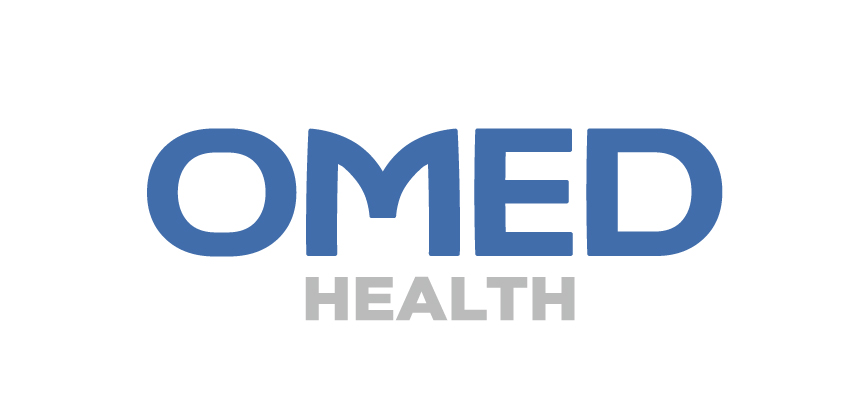Introduction
The diverse role of the gut and the microorganisms living within it has been of great interest to human health. From helping to digest and absorb food, to regulating the immune system and our mood, studies continue to highlight the immense role the gut and the microbiome play in health. Consequently, there has also been a growing interest among researchers in finding out what factors improve our gut health.
Firstly, and most obviously, the food we eat has a major impact on our gut health. A quick internet search reveals hundreds of blogs titled with some variation of “10 foods for a healthy gut”. But in essence, research has shown that diets rich in fruits, vegetables, whole grains, nuts, and seeds promote a healthy microbiota and gut (1). Additionally, sleep patterns, stress levels, alcohol consumption, and smoking status are among the many other factors that influence gut health. Interestingly, a growing amount of research has begun to uncover the role of exercise in gut and microbiome health.
Is exercise beneficial for your gut health?
A greater microbiome diversity is associated with better health in general, with lower diversity being associated with conditions such as obesity, and diabetes (2). The effect of exercise on the diversity and population of healthy bacteria in the gut has also been investigated. A systematic review by Boytar AN, et. al has summarized the effects of different exercise types on the microbiome. The review found that more diverse exercises (e.g. aerobic training in combination with resistance training) more often increased diversity. The review also suggested that 30-90 minutes of exercise, three to five times a week was able to elicit the most change (3).
In addition to increased diversity, a review comparing athletes to inactive individuals found that athletes tend to have a higher population of beneficial gut bacteria (4,5). These species include butyrate-producing eubacterium rectale and faecalibacterium prausnitzii. Butyrate is a beneficial short-chain fatty acid that is a major energy source for the cells that line our intestines and helps in the maintenance of normal gut function (6). The presence of the F. prausnitzii bacteria is also linked to a reduction of inflammation in the gut. This reduction is associated with a decreased risk of Inflammatory Bowel Diseases (IBD) such as Crohn’s Disease. Other beneficial bacteria more prevalent in athletes include Akkermansia muciniphila which can improve immune responses, and parabacteroides that has been shown to help regulate glucose processing to reduce the risk of obesity development in mice (7).
Other than benefits to the microbiome, some research suggests that physical activity promotes gut muscle contractions, improving gastrointestinal motility and decreasing colonic transit time to alleviate constipation symptoms (8,9). Physical exercise also correlates with a reduced risk of colon and stomach cancer (10), and certain gastrointestinal disorders like diverticular disease (formation of herniations on the colon’s wall) by decreasing inflammation and pressure in the colon (11,12). Therefore, research suggests that there are links between people who exercise regularly and a healthy gut.
Can you exercise too much?
With all its benefits, exercise has also been observed to have some negative effects on the gut, especially in the case of strenuous exercise. The same review by Boytar AN, et al suggests that intense exercise could potentially cause negative changes to the gut (3). Breath analysis of ultramarathon runners suggests an altered gut microbiome in response to exhaustive exercise (13). This unbalancing of the gut microbiome (also known as dysbiosis) is linked to inflammation, contributing to the onset of inflammatory and autoimmune diseases such as IBD, type 1 diabetes, and multiple sclerosis (14).
Strenuous exercise is also linked to what is sometimes called “leaky gut syndrome” where the gut barrier is thought to be compromised. During exercise, blood flow is redirected from other organs to the muscles, leading to a reduction in blood flow to the intestines. This results in the intestinal cells having limited oxygen, which can damage them. The proteins that help to keep the intestinal barrier intact and healthy can also be damaged by this (15). Once damaged, small molecules like toxins, proinflammatory compounds, and even bacteria can enter the bloodstream from the intestines. This “leaking” of substances into the bloodstream can travel to cause damage to different organs and has been hypothesized to contribute to the development of conditions such as irritable bowel syndrome (IBS), heart diseases, and autoimmune diseases like type 1 diabetes (16).
It is worth mentioning that the negative changes to the microbiome and leaky gut syndrome were observed in individuals who trained for over 90 minutes more than five times a week (3), and in ultramarathon and triathlon athletes (15), respectively. There is little evidence to suggest that these issues occur with a moderate exercise lifestyle.
Conclusion: what’s the verdict?
In general, studies seem to point towards moderate exercise as being the most beneficial for the gut microbiome and health. Non-prolonged, moderate exercise is likely to be beneficial for the gut, increasing intestinal motility, beneficial bacteria loads, and abundance and diversity of the gut microbiota (15). The “threshold” where exercise intensity becomes detrimental is difficult to determine due to the range of factors at play but is likely to be relatively high. Additionally, the factors mentioned above are from studies of large cohorts, which may not be very predictive for an individual because everyone is unique!
How can OMED Health help?
At OMED Health, we are researching the microbiome, how it reacts to various stimuli, and identifying molecules in the breath associated with gastrointestinal disease in order to develop clinical tests. That’s why we’ve worked hard to develop a sensor-based device that measures hydrogen and methane levels in breath – common gases detectable in our breath that are produced by our gut microbiomes. You can purchase your OMED Health Breath Analyzer Device. You can check your levels after eating different foods or exercising and work with our clinicians to help you to visualize and understand how your gut is responding to them. Be scientific on your gut journey to help you to make informed choices to improve your gut health symptoms.
References
- Aziz T, Hussain N, Hameed Z, Lin L. Elucidating the role of diet in maintaining gut health to reduce the risk of obesity, cardiovascular and other age-related inflammatory diseases: recent challenges and future recommendations. Gut Microbes. 2024;16(1):2297864. doi: 10.1080/19490976.2023.2297864
- Claesson MJ, Jeffery IB, Conde S, Power SE, O’Connor EM, Cusack S, et al. Gut microbiota composition correlates with diet and health in the elderly. Nature. 2012 Aug 9;488(7410):178–84. doi: 10.1038/nature11319
- Boytar AN, Skinner TL, Wallen RE, Jenkins DG, Dekker Nitert M. The Effect of Exercise Prescription on the Human Gut Microbiota and Comparison between Clinical and Apparently Healthy Populations: A Systematic Review. Nutrients. 2023 Mar 22;15(6):1534. doi: 10.3390/nu15061534
- Aya V, Flórez A, Perez L, Ramírez JD. Association between physical activity and changes in intestinal microbiota composition: A systematic review. PLoS ONE. 2021 Feb 25;16(2):e0247039. doi: 10.1371/journal.pone.0247039
- Bressa C, Bailén-Andrino M, Pérez-Santiago J, González-Soltero R, Pérez M, Montalvo-Lominchar MG, et al. Differences in gut microbiota profile between women with active lifestyle and sedentary women. PLoS ONE. 2017 Feb 10;12(2):e0171352. doi: 10.1371/journal.pone.0171352
- Fu X, Liu Z, Zhu C, Mou H, Kong Q. Nondigestible carbohydrates, butyrate, and butyrate-producing bacteria. Crit Rev Food Sci Nutr. 2019;59(sup1):S130–52. doi: 10.1080/10408398.2018.1542587
- Wang K, Liao M, Zhou N, Bao L, Ma K, Zheng Z, et al. Parabacteroides distasonis Alleviates Obesity and Metabolic Dysfunctions via Production of Succinate and Secondary Bile Acids. Cell Rep. 2019 Jan 2;26(1):222-235.e5. doi: 10.1016/j.celrep.2018.12.028
- De Schryver AM, Keulemans YC, Peters HP, Akkermans LM, Smout AJ, De Vries WR, et al. Effects of regular physical activity on defecation pattern in middle-aged patients complaining of chronic constipation. Scand J Gastroenterol. 2005 Apr;40(4):422–9. doi: 10.1080/00365520510011641
- Kim YS, Song BK, Oh JS, Woo SS. Aerobic exercise improves gastrointestinal motility in psychiatric inpatients. World J Gastroenterol WJG. 2014 Aug 14;20(30):10577–84. doi: 10.3748/wjg.v20.i30.10577
- Physical Activity and Cancer Fact Sheet – NCI [Internet]. 2020 [cited 2024 Jul 9]. Available from: https://www.cancer.gov/about-cancer/causes-prevention/risk/obesity/physical-activity-fact-sheet
- Strate LL, Liu YL, Aldoori WH, Giovannucci EL. Physical activity decreases diverticular complications. Am J Gastroenterol. 2009 May;104(5):1221–30. doi: 10.1038/ajg.2009.121
- WILLIAMS PT. Incident Diverticular Disease Is Inversely Related to Vigorous Physical Activity. Med Sci Sports Exerc. 2009 May;41(5):1042–7. doi: 10.1249/MSS.0b013e318192d02d
- Chou H, Arthur K, Shaw E, Schaber C, Boyle B, Allsworth M, et al. Metabolic insights at the finish line: deciphering physiological changes in ultramarathon runners through breath VOC analysis. J Breath Res. 2024 Feb;18(2):026008. doi: 10.1088/1752-7163/ad23f5
- Ticinesi A, Lauretani F, Tana C, Nouvenne A, Ridolo E, Meschi T. Exercise and immune system as modulators of intestinal microbiome: implications for the gut-muscle axis hypothesis. Exerc Immunol Rev. 2019;25:84–95.
- Ribeiro FM, Petriz B, Marques G, Kamilla LH, Franco OL. Is There an Exercise-Intensity Threshold Capable of Avoiding the Leaky Gut? Front Nutr. 2021 Mar 8;8:627289. doi: 10.3389/fnut.2021.627289
- Aleman RS, Moncada M, Aryana KJ. Leaky Gut and the Ingredients That Help Treat It: A Review. Molecules. 2023 Jan 7;28(2):619. doi: 10.3390/molecules28020619



